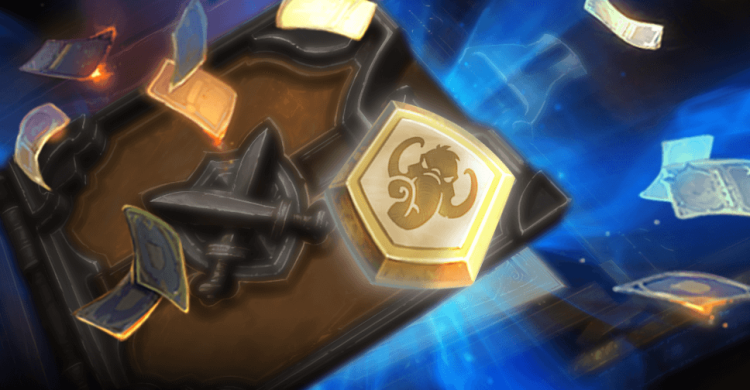So long, Kraken.
Hearthstone’s next expansion, Journey to Un’Goro, launches tomorrow (or maybe it’s already out by the time you read this, I don’t know — I’m not a mind-reader). While its 135 cards are exciting and all that, the release brings another huge change to digital card game leader. It marks the start of the new Standard cycle, the Year of the Mammoth.
This will make cards from the older Blackrock Mountain, The Grand Tournament, and League of Explorer sets ineligible in most of Hearthstone’s game modes. That’s a lot of card we have to say goodbye to. And while we’re happy to see some of the overly powerful and overplayed minions and spells go away, we’re going to deeply miss others.
Below, I’ve listed five soon-to-be non-Standard cards that I’m having a hard time seeing go. Not all of them were super powerful, but they were interesting additions that added a lot of fun to Hearthstone.
June 5th: The AI Audit in NYC
Join us next week in NYC to engage with top executive leaders, delving into strategies for auditing AI models to ensure fairness, optimal performance, and ethical compliance across diverse organizations. Secure your attendance for this exclusive invite-only event.
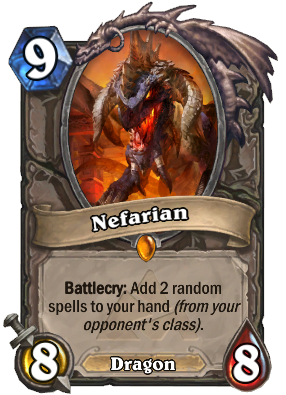
Above: Nefarian.
Poor Nefarian never saw a ton of play, but I always loved this card. Hearthstone’s fantastic presentation is a big part of its charm. In most card games, a minion enters the board with little fanfare. In Hearthstone, it’s a sensory extravaganza involving music, dialogue, and animations.
Sure, seeing the shadow of Nefarian swoop over the board was cool, but his lines were the best part of his entrance. Most cards say the same thing every time you play them. Some will have unique lines if you play them against specific heroes. But Nefarian had different dialogue for each of the game’s classes. It made him special.
The card isn’t bad, but few decks are going to include many (if any) minions that cost 9 or more mana. And if you’re going to have a 9 mana dragon in your deck, it’s probably going to be Ysera.
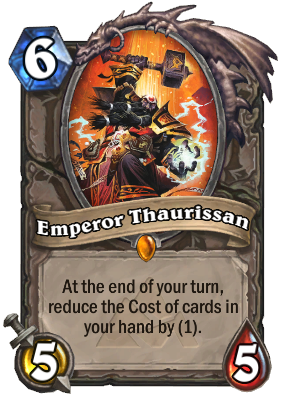
Above: Emperor Thaurissan.
Now, Emperor Thaurissan did see a lot of play. This awesome card had one of the most powerful effects in the game. Making your cards cheaper is great because it can help you play more each turn, but it also allows for combos that would otherwise be impossible. You could do things like play a Leeroy Jenkins with two Power Overwhlelmings, two Abusive Sergeants, and a Faceless Manipulator to deal 28 damage in one turn.
These days, Blizzard tries to discourage these combo decks that can deal a lot of damage in one turn, so we’re unlikely to see a card like Thaurissan again.
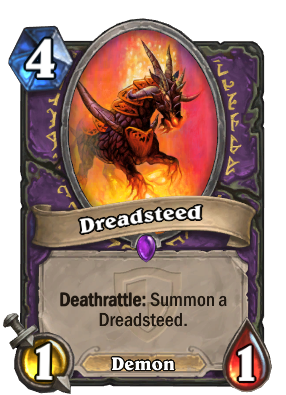
Above: Dreadsteed.
Dreadsteed was never super useful card, but it was always fun. Unless your opponent could Silence it, transform it, or send it back to your hand, Dreadsteed would keep re-summoning itself every time it died. You could get a surprising amount of value from a permanent 1/1 minion.
Nowadays, we have so many other sticky minions that give better stats or cheaper mana. Most Warlocks played Possessed Villager over Dreadsteed. Even though it would only ever get you one re-summon of a 1/1, the 1 mana cost made it much better. Maybe Dreadsteed would have been more practical if it was cheaper, but it was still a neat card.
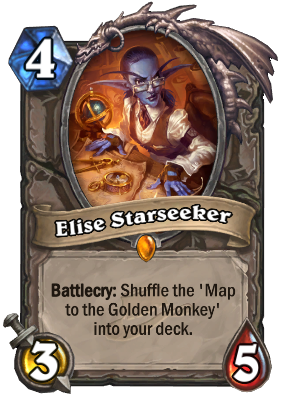
Above: Elise Starseeker.
Elise helped to define a generation of control decks, giving players a way win the late stages of the game when they were running out of cards. The Map to the Golden Monkey was 2 mana spell that would draw you a card and shuffle the Golden Monkey into your deck. The Golden Monkey was a 6/6 minion with Taunt that would transform all other minions in your hand and deck into random Legendary ones.
Not only was the random factor fun (you’d almost always get something good, it was just a matter of how good), but this was a card design we had not seen before. The ultimate benefit of playing this card wouldn’t come into play until super late in games, encouraging players to create decks that could survive until the drew through most of their cards. In some ways, this was like a precursor to the Quest cards we’re getting in Journey to Un’Goro. It has a tough requirement, but the reward is worth it.
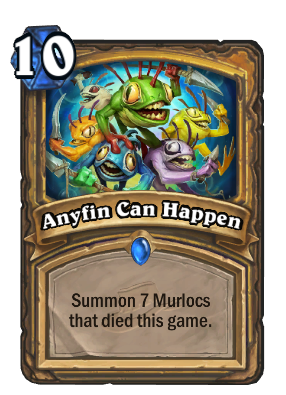
Above: Anyfin Can Happen.
Anythin is another Quest precursor. It sets your deck on a specific path, hoping that everything comes together for a big win at the end. For Anything to work, you really just needed to play two Bluegill Warriors and two Murloc Warleaders. Summoning those four again, thanks to the Charge effects of the Bluegills and the buffs from the Warleaders, lets you do a ton of damage.
It was a unique deck that stood out from more tempo-based and aggressive formats from things like Pirate Warrior and Jade Druid. Hopefully the Quest system will give us similar experiences.
